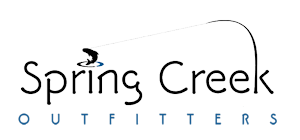Casselman River
The Casselman River is one of those great little trout streams that everyone should have to learned to fly fish on. The river's size, accessibility, and ease of wading make it an excellent stream for beginners. Managed as a delayed harvest area, the river is under catch and release regulations from the first of October through the 15th of June when anglers may use Artificial lures or Flies only. Thereafter a five fish per day limit is in place. The Casselman River is a favorite destination of fisherman of all skill levels and has been featured on ESPN's Fly Fishing America. Fisherman can expect good numbers of large rainbows and browns and excellent numbers of trout in the 12" to 14" range. Brook trout can often be found in the river during the spring months before the tempreature increases force them back to the tributaries. The Casselman flows through a wide valley filled with hardwood forests and Amish farmlands, its banks lined with alders and wildflowers, providing a setting that is hard to match in this age of fast food and urban developement.
Check out the Slideshow HERE.



















